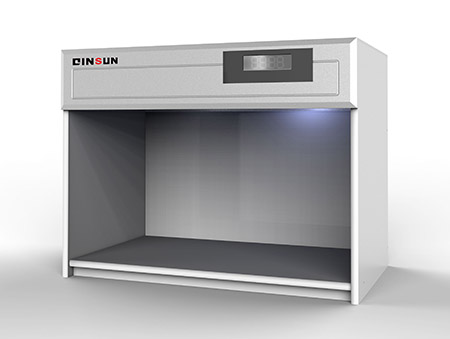For the maintenance of Color Assessment Cabinet, please pay attention to the following two points:
1. If the inner wall of the light box is stained, you can use a clean soft cloth dipped in alkaline low-concentration detergent to wipe it clean, so that the inner frame is clean and dry, so as to avoid damage to the light-absorbing coating on the inner wall of the light box and affect the color matching effect.

2. If the inner panel of the light box is damaged and cannot absorb light, it should be replaced. If the lamp tube is used for a long time and causes blackening at both ends, it should be replaced with a new lamp tube.
QINSUN Instrument is a professional technology enterprise specializing in the research and development, production, sales and service of instrument testing equipment. The main products include exporters of textile and clothing, leather shoes, geotechnical materials, automotive interior parts, plastic rubber, wire and cable and packaging materials and other testing equipment development and sales exporters.
评论
发表评论